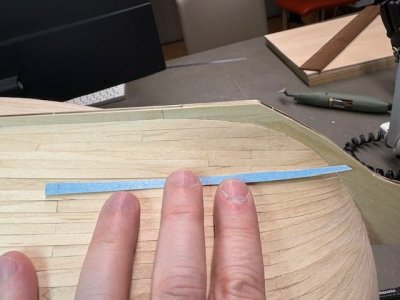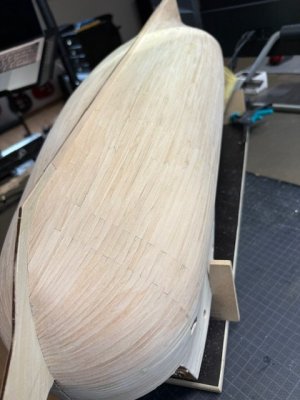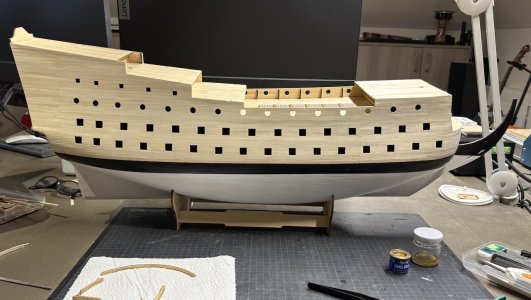With the second layer of planking in place for the upper part, it was time to cut the gun ports. Using the supplied paper template as a reference, I meticulously marked their positions with a pencil, double-checking for accuracy and alignment. To create the openings, I first drilled small pilot holes at each corner of the gun ports. Next, I carefully carved out the shapes using a sharp hobby knife, working slowly and steadily to maintain clean edges. After cutting, I sanded the edges smoothly and made necessary adjustments. Next will be second layer for the lower part...
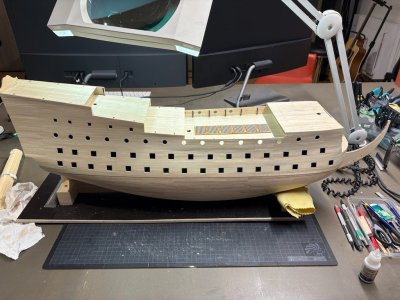




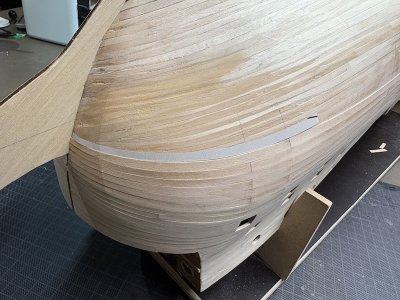


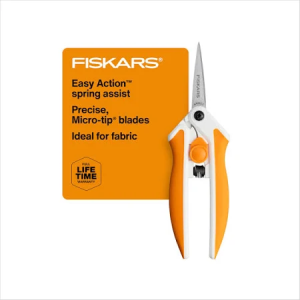
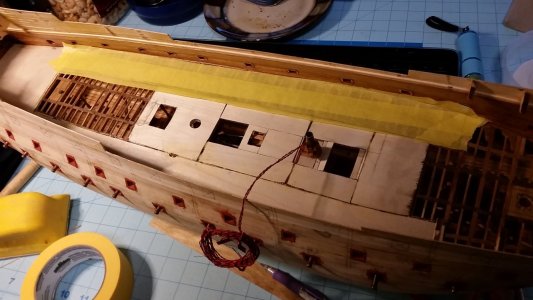



 )
)



